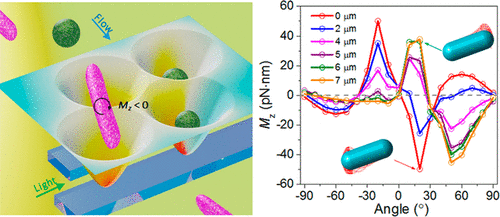Our official English website, www.x-mol.net, welcomes your
feedback! (Note: you will need to create a separate account there.)
Nanophotonic Array-Induced Dynamic Behavior for Label-Free Shape-Selective Bacteria Sieving.
ACS Nano ( IF 15.8 ) Pub Date : 2019-10-09 , DOI: 10.1021/acsnano.9b06459 Yuzhi Shi 1 , Haitao Zhao 1 , Kim Truc Nguyen 1 , Yi Zhang 2 , Lip Ket Chin 1 , Tongtong Zhu 3, 4 , Yefeng Yu 5 , Hong Cai 6 , Peng Huat Yap 7 , Patricia Yang Liu 1 , Sha Xiong 8 , Jingbo Zhang 1 , Cheng-Wei Qiu 3 , Che Ting Chan 9 , Ai Qun Liu 1
ACS Nano ( IF 15.8 ) Pub Date : 2019-10-09 , DOI: 10.1021/acsnano.9b06459 Yuzhi Shi 1 , Haitao Zhao 1 , Kim Truc Nguyen 1 , Yi Zhang 2 , Lip Ket Chin 1 , Tongtong Zhu 3, 4 , Yefeng Yu 5 , Hong Cai 6 , Peng Huat Yap 7 , Patricia Yang Liu 1 , Sha Xiong 8 , Jingbo Zhang 1 , Cheng-Wei Qiu 3 , Che Ting Chan 9 , Ai Qun Liu 1
Affiliation

|
Current particle sorting methods such as microfluidics, acoustics, and optics focus on exploiting the differences in the mass, size, refractive index, or fluorescence staining. However, there exist formidable challenges for them to sort label-free submicron particles with similar volume and refractive index yet distinct shapes. In this work, we report an optofluidic nanophotonic sawtooth array (ONSA) that generates sawtooth-like light fields through light coupling, paving the physical foundation for shape-selective sieving. Submicron particles interact with the coupled hotspots which impose different optical torques on the particles according to their shapes. Unstained S. aureus and E. coli are used as a model system to demonstrate this shape-selective sorting mechanism based on the torque-induced body dynamics, which was previously unattainable by other particle sorting technologies. More than 95% of S. aureus is retained within ONSA, while more than 97% of E. coli is removed. This nanophotonic chip offers a paradigm shift in shape-selective sorting of submicron particles and expands the boundary of optofluidics-based particle manipulation.
中文翻译:

纳米光子阵列诱导的无标签形状选择细菌筛分的动态行为。
当前的粒子分选方法(如微流体,声学和光学)致力于利用质量,尺寸,折射率或荧光染色的差异。然而,对于它们如何分类具有相似体积和折射率但形状不同的无标记亚微米颗粒存在巨大挑战。在这项工作中,我们报告了一种光流体纳米光子锯齿阵列(ONSA),该阵列通过光耦合产生锯齿状的光场,为形状选择筛分奠定了物理基础。亚微米颗粒与耦合的热点相互作用,这些热点根据其形状对颗粒施加不同的光学扭矩。未染色的金黄色葡萄球菌和大肠杆菌作为模型系统,该模型基于扭矩诱导的人体动力学演示了这种形状选择分选机制,这是其他粒子分选技术以前无法实现的。超过95%的金黄色葡萄球菌保留在ONSA中,而超过97%的大肠杆菌被去除。该纳米光子芯片在亚微米颗粒的形状选择分选中提供了范式转变,并扩展了基于光流学的颗粒操纵的范围。
更新日期:2019-10-10
中文翻译:

纳米光子阵列诱导的无标签形状选择细菌筛分的动态行为。
当前的粒子分选方法(如微流体,声学和光学)致力于利用质量,尺寸,折射率或荧光染色的差异。然而,对于它们如何分类具有相似体积和折射率但形状不同的无标记亚微米颗粒存在巨大挑战。在这项工作中,我们报告了一种光流体纳米光子锯齿阵列(ONSA),该阵列通过光耦合产生锯齿状的光场,为形状选择筛分奠定了物理基础。亚微米颗粒与耦合的热点相互作用,这些热点根据其形状对颗粒施加不同的光学扭矩。未染色的金黄色葡萄球菌和大肠杆菌作为模型系统,该模型基于扭矩诱导的人体动力学演示了这种形状选择分选机制,这是其他粒子分选技术以前无法实现的。超过95%的金黄色葡萄球菌保留在ONSA中,而超过97%的大肠杆菌被去除。该纳米光子芯片在亚微米颗粒的形状选择分选中提供了范式转变,并扩展了基于光流学的颗粒操纵的范围。































 京公网安备 11010802027423号
京公网安备 11010802027423号